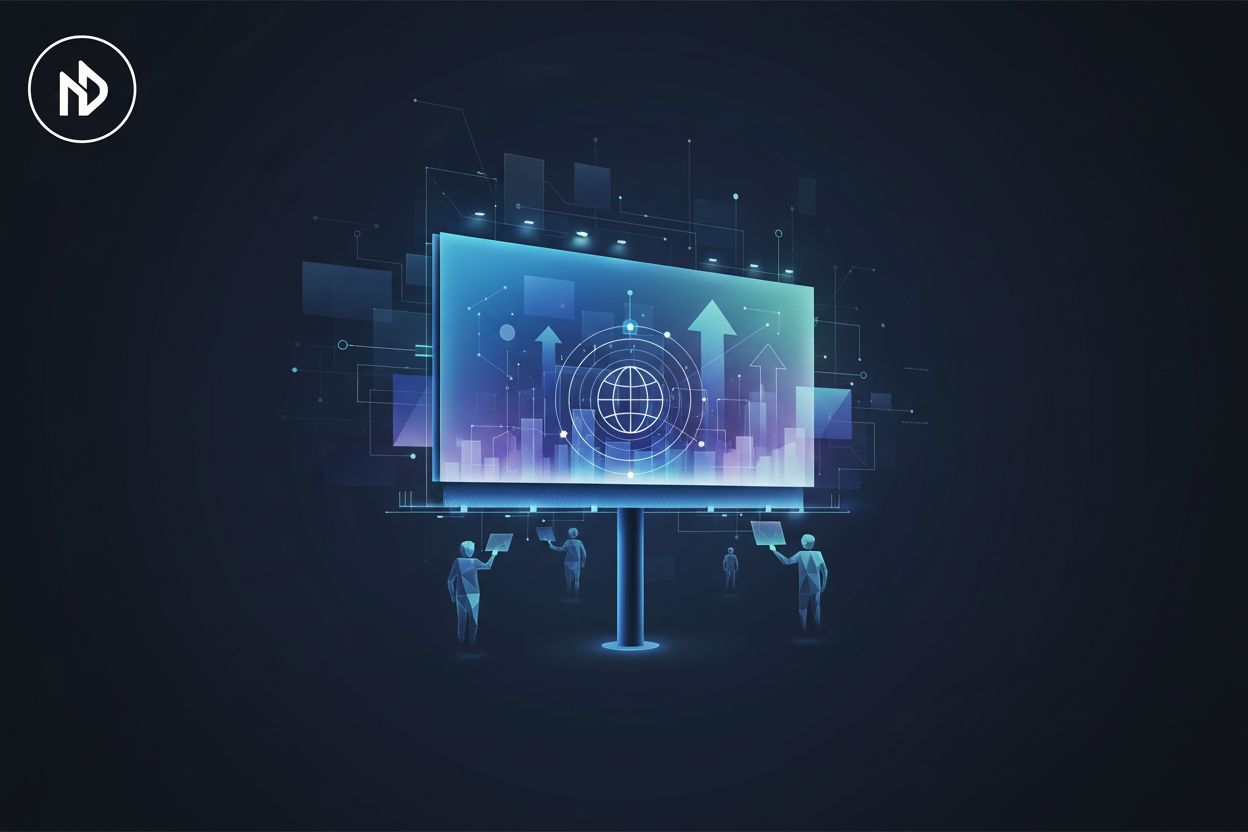Unlocking Visual Content Creation: How Generative AI is Transforming Digital Strategies
TL;DR
Introduction: The Generative AI Revolution in Visuals
Generative AI is changing how we create visual content, but is your brand ready to embrace it? This technology allows for the rapid generation of diverse visuals, opening new avenues for digital strategies.
Generative AI uses neural networks to learn from existing data and create new, original content. This includes text, images, audio, and 3D models. NVIDIA notes that these models leverage unsupervised or semi-supervised learning, enabling quicker use of large amounts of unlabeled data.
This shift marks a departure from traditional methods, where content creation was often time-consuming and resource-intensive. Now, AI can assist in various tasks, from generating initial concepts to refining final designs.
For example, in healthcare, AI can generate medical images for training purposes. In retail, it can create personalized product visualizations. Even in finance, AI can produce data visualizations for reports.
Why Visual Content Matters More Than Ever
Visual content is crucial in today's digital landscape. It captures attention, enhances brand storytelling, and drives engagement. High-quality visuals are essential for effective marketing campaigns.
Visuals enhance brand storytelling. They help brands connect with audiences on an emotional level. They also improve understanding and retention of information.
For instance, compelling visuals in social media campaigns can significantly increase engagement rates. In e-commerce, high-quality product images can drive conversions. A well-crafted brand video can communicate a company's values and mission.
Generative AI: A Game-Changer for Brands
Generative AI tools are revolutionizing brand visual strategies by offering efficiency, scalability, and creativity. These tools enable brands to produce a high volume of visuals quickly. They also allow for experimentation with different styles and concepts.
Efficiency is a key benefit. AI can automate repetitive tasks, freeing up human designers to focus on more strategic and creative work. Generative AI also allows brands to scale their visual content production.
As we explore specific applications and strategies, you'll see how generative AI can transform your brand's visual content creation.
Next, we'll delve into the specific AI tools that are transforming the visual content landscape.
Understanding Generative AI Models for Visuals
Did you know that generative AI models can now create visuals indistinguishable from human-made content? These advanced tools are transforming digital strategies by offering unprecedented creative possibilities. Let's dive into how these models work and what sets them apart.
Generative AI relies on various models, each with unique strengths. Generative Adversarial Networks (GANs), Variational Autoencoders (VAEs), and Diffusion Models are among the most prominent. Understanding their differences is key to leveraging them effectively.
- GANs consist of two neural networks: a generator and a discriminator. The generator creates new images, while the discriminator tries to distinguish between real and generated images. This adversarial process results in high-quality visuals but can sometimes lack diversity.
- VAEs use an encoder to compress input data into a latent space and a decoder to reconstruct it. NVIDIA explains that this allows for efficient sampling of new latent representations, enabling the creation of novel data. While faster than diffusion models, VAEs may produce less detailed images.
- Diffusion Models, also known as denoising diffusion probabilistic models (DDPMs), add random noise to training data and then reverse the process to reconstruct the data. This two-step process allows for training hundreds, if not an infinite amount, of layers, which means that diffusion models generally offer the highest-quality output when building generative AI models.
AI models learn to create visuals through a process called training. This involves feeding the model a large dataset of images. The AI identifies patterns and features within the data. It then uses these patterns to generate new, original content.
The quality of the training data is crucial. High-quality, unbiased data leads to better results. For instance, in medical imaging, AI models trained on diverse datasets of medical scans can generate realistic images for training and research.
As AI continues its evolution, staying informed about these models is key to remaining competitive.
Moving on, we'll examine how AI learns to create visuals and the importance of training data.
Applications of Generative AI in Visual Content Creation
Want to create visuals that truly resonate with your audience? Generative AI can help you craft compelling imagery that captures attention and drives engagement.
Generative AI is revolutionizing how brands approach visual content creation. It enables marketers and advertisers to produce unique, attention-grabbing images for campaigns. AI algorithms can generate diverse visuals, from social media graphics to website banners, quickly and efficiently.
- Social Media: AI can create eye-catching visuals tailored to specific platforms, boosting engagement and brand visibility. For example, dynamic visuals can adapt to real-time trends, ensuring content remains relevant and fresh.
- Websites: AI can generate website banners and hero images that align with brand aesthetics, enhancing user experience and driving conversions.
- Print Materials: AI can assist in designing brochures, posters, and other print materials, ensuring brand consistency across all channels.
AI-generated ads are proving their worth in the advertising world. These ads often achieve higher click-through rates and engagement levels by offering personalized and novel content. By analyzing user data and preferences, AI can tailor ad visuals to individual tastes, increasing their effectiveness.
- E-commerce: AI can generate personalized product images for each customer, showing items in different settings or styles. This tailored approach significantly boosts conversion rates.
- Fashion Retail: Virtual models can showcase clothing items in varied poses and locations, creating visually appealing and engaging catalogs.
It's important to consider the ethical implications of using AI-generated imagery. White & Case LLP notes that users should be aware of copyright issues and potential biases in AI outputs. Ensuring transparency and responsible use is key to maintaining trust with your audience.
Generative AI is set to transform marketing and advertising. As AI models become more sophisticated, their ability to generate high-quality, engaging visuals will only increase.
Next, we'll explore how generative AI enhances product visualization and design, offering new ways to showcase and develop innovative products.
Strategic Integration: Aligning AI with Brand Identity
Is your brand voice getting lost in the AI revolution? Generative AI offers incredible opportunities, but strategic integration is key to maintaining brand consistency.
Maintaining brand consistency when using AI can be challenging. AI-generated content might unintentionally deviate from established guidelines. This includes tone, style, and visual elements. Careful oversight is crucial to ensure AI enhances brand identity.
Here are some guidelines for ensuring AI-generated content aligns with brand standards:
- Establish clear prompting protocols. Provide detailed instructions that include brand voice, style, and visual preferences.
- Implement review processes. Have human editors review AI-generated content to ensure it meets brand guidelines.
- Curate training data. Use data sets that reflect your brand's aesthetic and messaging. This helps AI learn and replicate your style.
For example, a financial services company might use AI to generate personalized investment reports. However, it's crucial to ensure the AI maintains a professional and trustworthy tone, consistent with the brand's values. In healthcare, AI could assist in creating patient education materials, but these must adhere to strict accuracy and empathy standards.
GetDigitize: Crafting Brand Identities for the AI Era
Need help navigating the complexities of AI and branding? GetDigitize is a full-service digital creative agency. They specialize in helping brands develop and maintain consistent brand identities in the age of AI.
GetDigitize offers expertise in:
- Brand strategy
- Digital marketing
- UI/UX design
- Copywriting
- Content planning
- Product design
- Advertising campaigns
Their tailored offerings leverage AI-generated visuals effectively, ensuring your brand remains cohesive and impactful.
Workflow Optimization: Integrating AI into Creative Processes
Integrating AI tools into existing creative workflows should augment, not replace, human creativity.
Here are some strategies for seamless integration:
- Start with pilot projects. Introduce AI in specific areas and gradually expand its role.
- Provide training. Equip creative teams with the skills to use AI tools effectively.
- Foster collaboration. Encourage human designers and AI to work together, leveraging their respective strengths.
A retail company, for example, could use AI to generate initial design concepts for marketing campaigns. Human designers then refine these concepts, adding their creative expertise.
As AI continues to evolve, its strategic integration with brand identity will define success. Next, we'll explore how workflow optimization allows you to make the most of your creative process.
Overcoming the Challenges and Risks of Generative AI
Is generative AI too good to be true? While it offers immense potential, recognizing and addressing its challenges is crucial for responsible and effective implementation.
One of the primary concerns surrounding generative AI is the potential for bias in AI-generated content. AI models learn from existing data, and if that data reflects societal biases, the AI will likely perpetuate them. It’s also essential to consider the authenticity of AI-generated content, as it can be difficult to distinguish from human-created work.
Copyright issues also loom large. White & Case LLP highlights the importance of understanding that, as US copyright law stands, AI-generated content receives limited protection. This is something to consider when deciding whether to lean on copyright law, or other means of protection.
Users should be aware of copyright issues and potential biases in AI outputs.
Data privacy is paramount when training AI models. Sensitive data used in AI processes must be protected. Compliance with data privacy regulations, such as GDPR, is essential.
Organizations must implement robust security measures to safeguard data used for training AI models. This involves anonymization, encryption, and strict access controls. Failing to protect sensitive data can lead to legal repercussions and erode customer trust.
To avoid skewed outputs, unbiased training data is essential. Strategies for identifying and mitigating bias in AI models are also crucial. Ensuring fairness and inclusivity in AI-generated visuals is key to responsible AI use.
- Implement bias detection tools to identify and address biases in training data.
- Ensure diverse representation in training datasets to promote inclusivity.
- Conduct regular audits of AI-generated content to identify and rectify any biases.
As AI continues to evolve, it's crucial to address these challenges head-on to harness its potential responsibly. Next, we'll delve into the future of digital marketing and the role of AI in shaping it.
Measuring the ROI of Generative AI in Visual Content
Can generative AI visuals truly pay for themselves? Measuring the return on investment (ROI) of AI in visual content is essential for justifying its adoption and optimizing its use.
To measure the success of AI-driven visual content, start by pinpointing the right Key Performance Indicators (KPIs). Consider how AI impacts metrics like engagement, conversion rates, and brand awareness. For example, a measurable goal could be to increase social media engagement by 30% using AI-generated visuals.
- Engagement: Track likes, shares, comments, and click-through rates on AI-generated visuals. In retail, monitor how AI-driven personalized product images affect time spent on product pages.
- Conversion Rates: Analyze whether AI-enhanced visuals lead to higher sales or sign-ups. For instance, in e-learning, measure if AI-generated course previews increase enrollment rates.
- Brand Awareness: Assess changes in brand mentions, sentiment, and reach. A finance company could gauge if AI-designed infographics improve brand perception as innovative.
Effectively tracking and analyzing AI-generated visuals requires the right tools and techniques. It's important to know how to attribute revenue and cost savings to specific AI initiatives, and A/B testing is a great way to evaluate AI effectiveness.
- Analytics Platforms: Use tools like Google Analytics to monitor website traffic and user behavior related to AI-generated visuals. Track the performance of AI-generated ad creatives versus traditional designs.
- A/B Testing: Conduct A/B tests to compare the performance of AI-generated visuals against traditional content. For example, a healthcare provider could test AI-generated vs. human-designed social media graphics to see which drives more appointment bookings.
- Attribution Modeling: Implement attribution models to link revenue and cost savings directly to AI initiatives. In e-commerce, this could involve tracking how AI-generated product visualizations influence purchases.
Measuring the ROI of generative AI in visuals helps you refine your strategies and prove their value. By setting clear goals, tracking the right metrics, and using appropriate tools, you can unlock the full potential of AI.
Next, we'll explore the future of digital marketing and how AI is set to revolutionize it.
The Future of Visual Content: Predictions and Trends
Generative AI is rapidly evolving, but how will it reshape visual content creation in the coming years? Expect to see even more personalized visuals, AI-driven video creation, and immersive experiences that redefine how brands connect with their audiences.
Hyper-personalization will be the norm. AI can analyze individual preferences to generate visuals tailored to each user. For example, in e-commerce, AI could create product images that reflect a customer's style and past purchases.
AI-driven video creation will become more accessible. Imagine AI generating entire video ads from a simple text prompt, complete with realistic actors and scenes. This lowers production costs and speeds up content delivery.
Immersive experiences will blur the lines between reality and digital content. Retailers could use AI to create virtual try-on experiences, allowing customers to see how clothes fit them without physically going to a store.
Embrace continuous learning and adaptation. AI is constantly changing, so keep your skills up-to-date. Take online courses, attend webinars, and follow industry leaders to stay informed.
Foster a digital culture change. Encourage experimentation with AI tools across your organization. Create innovation labs or pilot projects to explore new possibilities.
Prioritize strategic implementation. Don't adopt AI for its own sake. Align AI initiatives with your brand identity and business goals. As GetDigitize highlights, maintaining brand consistency is key in the age of AI.
Address ethical considerations. Ensure transparency and responsible AI use. As White & Case LLP notes, users should be aware of copyright issues and potential biases in AI outputs.
Generative AI is not just a tool, but a strategic partner for innovation and growth. By preparing your brand today, you can unlock its full potential and lead the way in the AI-powered future of visual content.




